Wenn es um industrielle Materialien geht, haben sie etwas fast Magisches an sich Pulver in Plasmaqualität. Wenn Sie mit Hightech-Industrien oder modernster Fertigung vertraut sind, haben Sie wahrscheinlich schon von diesem faszinierenden Material gehört. Aber was genau ist Plasmapulver, und warum ist es für die heutigen Fertigungsprozesse so wichtig?
In diesem Leitfaden nehmen wir Sie mit auf einen tiefen Tauchgang in die Welt der Plasmapulver. Wir erkunden ihre Zusammensetzung, Eigenschaften, Anwendungen und vieles mehr. Außerdem vergleichen wir verschiedene Modelle von Metallpulvern und helfen Ihnen dabei, die Feinheiten zu verstehen, die das eine vom anderen unterscheiden. Ganz gleich, ob Sie ein Branchenprofi oder ein neugieriger Leser sind, dieser Artikel wird Ihnen den nötigen Einblick geben.
Was ist Plasma-Qualitätspulver?
Plasmapulver ist eine Art von Metallpulver, das durch ein Plasma-Zerstäubungsverfahren hergestellt wird. Bei diesem Verfahren wird ein Plasmabrenner verwendet, um Metall zu schmelzen und in feine Pulverpartikel zu zerstäuben. Das Ergebnis ist ein hochwertiges Pulver mit spezifischen Eigenschaften, die auf fortschrittliche Fertigungsverfahren wie 3D-Druck, Beschichtung und additive Fertigung zugeschnitten sind.
Die wichtigsten Eigenschaften von Pulver in Plasmaqualität
Um die Bedeutung von Pulver in Plasmaqualität zu verstehen, ist es wichtig, die wichtigsten Eigenschaften zu kennen, die es so wertvoll machen:
- Partikelgrößenverteilung: Pulver in Plasmaqualität haben eine enge Partikelgrößenverteilung und sind daher ideal für Präzisionsanwendungen.
- Sphärizität: Die Partikel sind nahezu perfekt kugelförmig, was die Fließfähigkeit und die Packungsdichte verbessert.
- Reinheit: Diese Pulver weisen einen hohen Reinheitsgrad auf und sind nur minimal durch Oxide oder andere Verunreinigungen verunreinigt.
- Dichte: Pulver in Plasmaqualität haben in der Regel eine hohe Schütt- und Stampfdichte, die eine gleichmäßige Leistung gewährleistet.

Arten von Plasmaqualitätspulvern
In Anbetracht der verschiedenen Anwendungen für Pulver in Plasmaqualität gibt es mehrere Typen und Qualitäten. Nachstehend finden Sie eine detaillierte Tabelle mit einigen der bekanntesten Metallpulver in Plasmaqualität, einschließlich ihrer spezifischen Modelle und Beschreibungen:
| Modell | Zusammensetzung | Merkmale | Anwendungen | Bemerkenswerte Eigenschaften |
|---|---|---|---|---|
| GKN Hoeganaes PF-1 | Eisenbasislegierung | Hohe Sphärizität, ausgezeichnete Fließfähigkeit | Metall-Spritzgießen, 3D-Druck | Hohe Reinheit, niedriger Sauerstoffgehalt |
| Sandvik Osprey 17-4 | Rostfreier Stahl | Korrosionsbeständig, hohes Verhältnis von Festigkeit zu Gewicht | Luft- und Raumfahrt, medizinische Implantate | Niedriger Kohlenstoffgehalt, hohe Zugfestigkeit |
| AP&C Ti-6Al-4V | Titan-Legierung | Biokompatibel, leicht, hohe Zugfestigkeit | Luft- und Raumfahrt, Medizintechnik, Automobilindustrie | Hervorragende Ermüdungsfestigkeit |
| Schreiner LPW 316L | Rostfreier Stahl | Ausgezeichnete Korrosionsbeständigkeit, niedriger Kohlenstoffgehalt | Marine, chemische Verarbeitung | Hohe Duktilität, Schweißbarkeit |
| EOS NickelLegierung HX | Nickel-Basis-Legierung | Hitzebeständig, oxidationsbeständig | Turbinen, Hochtemperaturumgebungen | Ausgezeichnete Kriechfestigkeit |
| Höganäs FeSi 75 | Eisen-Silizium-Legierung | Hohe magnetische Permeabilität, geringe elektrische Verluste | Komponenten aus Elektrostahl | Hohe Reinheit, gleichbleibende Korngröße |
| Tekna Ti64 Gd23 | Titan-Legierung | Hohe Festigkeit, gute Dehnung, geeignet für den Einsatz unter hohem Druck | Automobilindustrie, Luft- und Raumfahrt, medizinische Geräte | Konsistente Partikelgrößenverteilung |
| Praxair Inconel 625 | Nickel-Chrom | Hervorragende Ermüdungs- und Thermoermüdungsfestigkeit | Öl und Gas, Kernreaktoren | Hervorragende Schweißbarkeit und Korrosionsbeständigkeit |
| Metco 43VF-NS | Kobalt-Legierung | Verschleißfest, behält seine Festigkeit bei hohen Temperaturen bei | Turbinenschaufeln, Verschleißteile | Ausgezeichnete Hochtemperatureigenschaften |
| Toyal AP10 | Aluminiumlegierung | Leichtes Gewicht, hohe Wärmeleitfähigkeit | Luft- und Raumfahrt, Elektronik | Hervorragende Oxidationsbeständigkeit |
Zusammensetzung der Plasmaqualität Pulver
Die Zusammensetzung des Plasmapulvers ist es, die ihm seine bemerkenswerten Eigenschaften verleiht. Verschiedene Metallpulver bestehen aus unterschiedlichen Elementen, je nach der gewünschten Anwendung. Hier ist eine Aufschlüsselung der üblichen Zusammensetzungen:
| Metallpulver Typ | Hauptkomponenten | Typische Zusatzstoffe |
|---|---|---|
| Eisenbasis-Legierungen | Eisen (Fe), Kohlenstoff (C), Silizium (Si) | Mangan (Mn), Nickel (Ni), Chrom (Cr) |
| Rostfreier Stahl | Eisen (Fe), Chrom (Cr), Nickel (Ni) | Molybdän (Mo), Kohlenstoff (C), Mangan (Mn) |
| Titan-Legierungen | Titan (Ti), Aluminium (Al), Vanadium (V) | Sauerstoff (O), Stickstoff (N), Kohlenstoff (C) |
| Nickel-Basis-Legierungen | Nickel (Ni), Chrom (Cr), Molybdän (Mo) | Eisen (Fe), Aluminium (Al), Titan (Ti) |
| Kobalt-Legierungen | Kobalt (Co), Chrom (Cr), Wolfram (W) | Nickel (Ni), Molybdän (Mo), Kohlenstoff (C) |
| Aluminium-Legierungen | Aluminium (Al), Silizium (Si), Magnesium (Mg) | Kupfer (Cu), Zink (Zn), Mangan (Mn) |
Verstehen der Komposition
Wenn Sie es mit Pulvern in Plasmaqualität zu tun haben, ist die Kenntnis ihrer Zusammensetzung entscheidend. Zum Beispiel sind Titanlegierungen wie AP&C Ti-6Al-4V sind in der Luft- und Raumfahrtindustrie wegen ihres guten Verhältnisses von Festigkeit zu Gewicht beliebt. Auf der anderen Seite, Rostfreier Stahl 316L wird wegen seiner hervorragenden Korrosionsbeständigkeit häufig in der Schifffahrt eingesetzt.
Die Zusammensetzung dieser Pulver bestimmt nicht nur ihre physikalischen und mechanischen Eigenschaften, sondern auch ihre Kompatibilität mit verschiedenen Herstellungsverfahren.
-
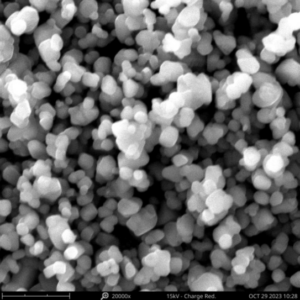 Molybdänpulver – Wasserstoffreduktion
Molybdänpulver – Wasserstoffreduktion -
 C103 Pulver
C103 Pulver -
 Reines Chrompulver
Reines Chrompulver -
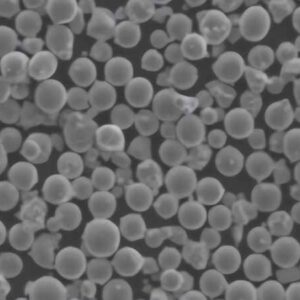 Pulver aus NiCoCrAlY-Legierungen
Pulver aus NiCoCrAlY-Legierungen -
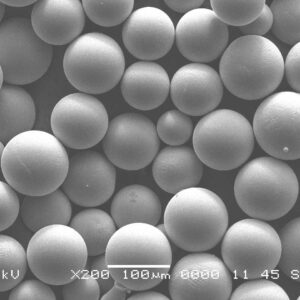 Rene 142 Legierung-Rene Pulver
Rene 142 Legierung-Rene Pulver -
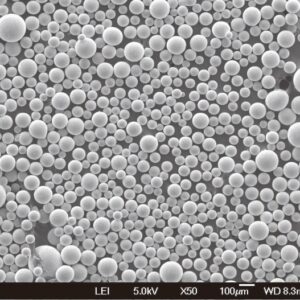 Haynes 25 Haynes-Pulver
Haynes 25 Haynes-Pulver -
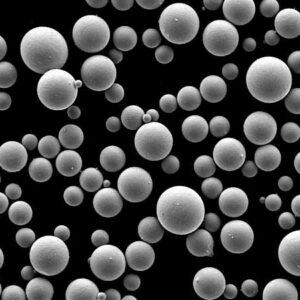 FGH95 Ni-Basis-Legierungspulver | Nickellegierungspulver
FGH95 Ni-Basis-Legierungspulver | Nickellegierungspulver -
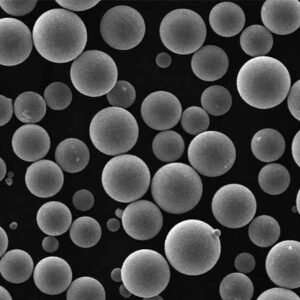 CMSX-4 Nickellegierungspulver | Nickellegierungspulver
CMSX-4 Nickellegierungspulver | Nickellegierungspulver -
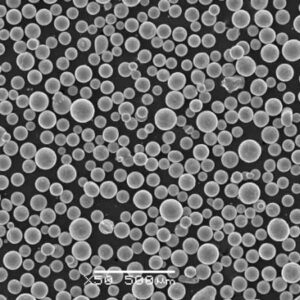 Ni-Fe-Mo Weichmagnetisches Pulver | Nickellegierungspulver
Ni-Fe-Mo Weichmagnetisches Pulver | Nickellegierungspulver
Merkmale der Plasmaqualität des Pulvers
Pulver in Plasmaqualität zeichnen sich durch ihre spezifischen Eigenschaften aus, die auf die Anforderungen der modernen Fertigung zugeschnitten sind. Im Folgenden gehen wir auf die wichtigsten Merkmale ein, die diese Pulver so begehrenswert machen:
Partikelgrößenverteilung
Eines der herausragenden Merkmale von Pulvern in Plasmaqualität ist ihre streng kontrollierte Partikelgrößenverteilung. Dies ist für die Gewährleistung der Einheitlichkeit bei Anwendungen wie dem 3D-Druck, bei denen eine gleichmäßige Schichtabscheidung entscheidend ist, von entscheidender Bedeutung. Ein Beispiel, AP&C Ti-6Al-4V Pulver haben in der Regel eine Partikelgrößenverteilung im Bereich von 15-45 Mikrometern, was ideal für additive Fertigungsverfahren ist.
Sphärizität
Die Sphärizität gibt an, wie rund die Pulverpartikel sind. Eine hohe Sphärizität ist von entscheidender Bedeutung, da sie die Fließfähigkeit verbessert, d. h., das Pulver kann leicht in Maschinen eingefüllt werden, ohne zu verklumpen. Dies ist besonders wichtig bei Anwendungen wie Plasmaspritzen und Pulvermetallurgie. Pulver wie GKN Hoeganaes PF-1 sind für ihre hohe Sphärizität bekannt, die zu einer höheren Packungsdichte und besseren mechanischen Eigenschaften des Endprodukts führt.
Reinheit
Reinheit ist ein nicht verhandelbarer Faktor, wenn es um Plasmapulver geht. Verunreinigungen können zu Defekten im Endprodukt führen, weshalb diese Pulver einer strengen Qualitätskontrolle unterzogen werden. Zum Beispiel, Sandvik Osprey 17-4 Pulver aus rostfreiem Stahl sind für ihren niedrigen Kohlenstoffgehalt bekannt, der das Korrosionsrisiko verringert und die Langlebigkeit des Materials insgesamt verbessert.
Dichte
Die Dichte von Pulvern in Plasmaqualität spielt eine entscheidende Rolle bei der Bestimmung der endgültigen Eigenschaften des hergestellten Teils. Eine hohe Schüttdichte ist wünschenswert, da sie zu einer geringeren Porosität des Endprodukts führt, während eine hohe Stampfdichte auf eine gute Fließfähigkeit hinweist. Zum Beispiel, EOS NickelLegierung HX wird bevorzugt bei Hochtemperaturanwendungen eingesetzt, da seine hohe Dichte eine solide und dauerhafte Struktur der Teile gewährleistet.
Anwendungen von Plasma-Qualitätspulvern
Die Vielseitigkeit von Pulvern in Plasmaqualität spiegelt sich in ihrer breiten Palette von Anwendungen in verschiedenen Branchen wider. Diese Pulver sind das Rückgrat mehrerer fortschrittlicher Fertigungsverfahren, darunter:
| Industrie | Gemeinsame Anwendungen | Bevorzugte Pudermodelle |
|---|---|---|
| Luft- und Raumfahrt | Turbinenschaufeln, Strukturkomponenten, Triebwerksteile | AP&C Ti-6Al-4V, Metco 43VF-NS |
| Medizinische | Implantate, Prothesen, chirurgische Instrumente | AP&C Ti-6Al-4V, Sandvik Osprey 17-4 |
| Automobilindustrie | Motorenteile, leichte Strukturbauteile | Tekna Ti64 Gd23, Schreiner LPW 316L |
| Energie | Turbinenteile, Teile für Kernreaktoren | Praxair Inconel 625, EOS NickelLegierung HX |
| Elektronik | Wärmesenken, leitende Komponenten | Toyal AP10, Höganäs FeSi 75 |
| Marine | Propeller, Wellen, Befestigungselemente | Schreiner LPW 316L, Sandvik Osprey 17-4 |
| Öl und Gas | Bohrausrüstung, Rohrleitungskomponenten | Praxair Inconel 625, Metco 43VF-NS |
Detaillierte Anwendungen
Luft- und Raumfahrtindustrie
In der Luft- und Raumfahrt müssen Werkstoffe extremen Bedingungen standhalten, von hohen Temperaturen bis hin zu starken mechanischen Belastungen. AP&C Ti-6Al-4V ist aufgrund seines geringen Gewichts und seiner hohen Festigkeit ein beliebter Werkstoff. Es wird für die Herstellung kritischer Komponenten wie Turbinenschaufeln verwendet, bei denen Leistung und Zuverlässigkeit nicht verhandelbar sind.
Medizinischer Bereich
Im medizinischen Bereich sind Biokompatibilität und Korrosionsbeständigkeit entscheidend. Sandvik Osprey 17-4 wird häufig für chirurgische Instrumente und Implantate verwendet, da es resistent gegen Körperflüssigkeiten ist und sicher in Langzeitanwendungen eingesetzt werden kann. Titanlegierungen wie AP&C Ti-6Al-4V sind wegen ihrer Verträglichkeit mit dem menschlichen Körper auch als Implantate beliebt.
Automobilsektor
Die Automobilindustrie sucht nach Materialien, die ein ausgewogenes Verhältnis zwischen Festigkeit und Gewicht bieten. Tekna Ti64 Gd23 ist ideal für diesen Sektor, da es eine hohe Festigkeit bei gleichzeitig geringem Gewicht der Bauteile bietet und so die Kraftstoffeffizienz und die Fahrzeugleistung verbessert.
Spezifikationen, Größen, Güteklassen und Normen
Bei der Auswahl eines Plasmapulvers ist es wichtig, die Spezifikationen, Größen, Qualitäten und Normen zu berücksichtigen. In der folgenden Tabelle sind einige der wichtigsten Spezifikationen und Normen für die verschiedenen Plasmaqualitätspulver aufgeführt:
| Pulver-Modell | Partikelgrößenbereich | Schüttdichte (g/cm³) | Erschlossene Dichte (g/cm³) | Normen |
|---|---|---|---|---|
| GKN Hoeganaes PF-1 | 10-50 Mikrometer | 3.0-4.0 | 4.5-5.5 | ASTM B214, ISO 4497 |
| Sandvik Osprey 17-4 | 15-45 Mikrometer | 4.0-5.0 | 5.5-6.5 | ASTM F75, ISO 5832-1 |
| AP&C Ti-6Al-4V | 15-45 Mikrometer | 2.5-3.5 | 3.5-4.5 | ASTM F136, ISO 5832-3 |
| Schreiner LPW 316L | 15-53 Mikrometer | 3.0-4.0 | 4.0-5.0 | ASTM A240, ISO 5832-1 |
| EOS NickelLegierung HX | 20-63 Mikrometer | 4.5-5.5 | 6.0-7.0 | ASTM B168, ISO 15156-3 |
| Höganäs FeSi 75 | 10-50 Mikrometer | 2.5-3.5 | 3.5-4.5 | ASTM A726, ISO 9001 |
| Tekna Ti64 Gd23 | 15-45 Mikrometer | 2.5-3.5 | 3.5-4.5 | ASTM F136, ISO 5832-3 |
| Praxair Inconel 625 | 20-63 Mikrometer | 4.5-5.5 | 6.0-7.0 | ASTM B443, ISO 15156-3 |
| Metco 43VF-NS | 15-53 Mikrometer | 4.0-5.0 | 5.5-6.5 | ASTM F75, ISO 5832-1 |
| Toyal AP10 | 10-50 Mikrometer | 2.5-3.5 | 3.5-4.5 | ASTM B557, ISO 9001 |
Die Auswahl der richtigen Spezifikationen
Die Auswahl des richtigen Pulvers hängt von Ihren spezifischen Anwendungsanforderungen ab. Zum Beispiel, wenn Sie in einer Hochtemperaturumgebung wie im Energiesektor arbeiten, EOS NickelLegierung HX aufgrund seiner hervorragenden Kriechfestigkeit die beste Wahl sein. Andererseits für medizinische Implantate, AP&C Ti-6Al-4V ist aufgrund seiner Biokompatibilität und Festigkeit vorzuziehen.
Lieferanten und Preisangaben
Für jedes Unternehmen ist es wichtig zu wissen, woher es qualitativ hochwertige Plasmapulver beziehen kann, und deren Preise zu kennen. Nachstehend finden Sie eine Tabelle mit Informationen über einige führende Anbieter und allgemeine Preisangaben:
| Anbieter | Verfügbare Pulvermodelle | Preisspanne (pro kg) | Zusätzliche Dienstleistungen |
|---|---|---|---|
| GKN Hoeganaes | GKN Hoeganaes PF-1, FeSi 75 | $50 – $120 | Kundenspezifische Pulvermischungen, technische Unterstützung |
| AP&C (GE-Zusatzstoff) | AP&C Ti-6Al-4V, Tekna Ti64 Gd23 | $200 – $500 | Pulverrecycling, Qualitätszertifizierung |
| Sandvik Fischadler | Sandvik Osprey 17-4, Carpenter LPW 316L | $150 – $300 | Technische Beratung, Anwendungsunterstützung |
| Praxair Oberflächentechnologien | Praxair Inconel 625, Metco 43VF-NS | $100 – $250 | Kundenspezifische Legierungen, F&E-Zusammenarbeit |
| EOS GmbH | EOS NickelAlloy HX, Toyal AP10 | $200 – $400 | Anwendungsentwicklung, Schulungsprogramme |
| Tischlertechnik | Schreiner LPW 316L, EOS NickelAlloy HX | $150 – $350 | Kundenspezifische Legierungen, Wärmebehandlungsdienstleistungen |
Worauf Sie bei einem Lieferanten achten sollten
Achten Sie bei der Auswahl eines Anbieters nicht nur auf den Preis, sondern auch auf die von ihm angebotenen Zusatzleistungen. Zum Beispiel, AP&C bietet Pulverrecyclingdienste an, die im Laufe der Zeit Abfall und Kosten erheblich reduzieren können. Ähnlich, Sandvik Fischadler bietet technische Beratung und hilft Ihnen, Ihre Herstellungsprozesse zu optimieren, um das Beste aus Ihren Pulvern herauszuholen.
Pro und Kontra: Vorteile und Grenzen von Plasmaqualität Pulver
Obwohl Pulver in Plasmaqualität unglaublich vielseitig und nützlich sind, haben sie auch ihre Nachteile. Hier finden Sie einen Vergleich der Vorteile und Einschränkungen:
| Aspekt | Vorteile | Beschränkungen |
|---|---|---|
| Sphärizität der Partikel | Verbessert die Fließfähigkeit, was zu einer besseren Teilekonsistenz führt | Geringfügig höhere Kosten aufgrund des komplexen Herstellungsprozesses |
| Reinheit | Verringert die Wahrscheinlichkeit von Mängeln in Endprodukten | Hochreine Pulver können strengere Handhabungsmaßnahmen erfordern. |
| Dichte | Führt zu starken, dichten Endteilen | Pulver mit hoher Dichte können teurer sein |
| Vielseitigkeit | Geeignet für eine breite Palette von Branchen | Einige Pulver sind hochspezialisiert, was ihre allgemeine Verwendung einschränkt |
| Personalisierung | Kann auf spezifische Anwendungen zugeschnitten werden | Kundenspezifische Pulver können lange Vorlaufzeiten haben |
| Auswirkungen auf die Umwelt | Kann recycelt werden und reduziert den Abfall | Der Plasma-Zerstäubungsprozess verbraucht viel Energie |
Abschließende Überlegungen zu den Vor- und Nachteilen
Wenn Sie die Abwägungen zwischen den Vorteilen und Grenzen von Pulvern in Plasmaqualität verstehen, können Sie fundiertere Entscheidungen treffen. Während zum Beispiel hochreine Pulver wie Sandvik Osprey 17-4 teurer sind, können sie die Langlebigkeit und Leistung Ihres Endprodukts erheblich verbessern, insbesondere bei kritischen Anwendungen wie medizinischen Implantaten oder Komponenten für die Luft- und Raumfahrt.
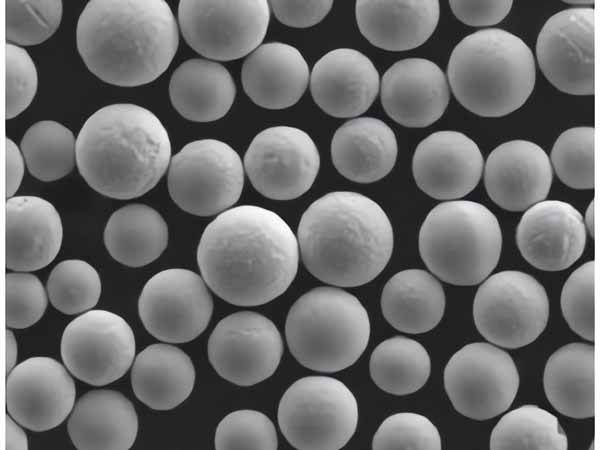
FAQs
| Frage | Antwort |
|---|---|
| Was ist der Hauptvorteil der Plasmazerstäubung? | Die Plasmazerstäubung erzeugt hochkugelförmige, hochreine Pulver mit gleichmäßiger Partikelgrößenverteilung, die sich ideal für Präzisionsanwendungen eignen. |
| Welche Branchen profitieren am meisten von Pulvern in Plasmaqualität? | Die Luft- und Raumfahrt-, Medizin-, Automobil- und Energiebranche profitieren am meisten von der hohen Leistung und Zuverlässigkeit des Materials. |
| Können Pulver in Plasmaqualität recycelt werden? | Ja, viele Anbieter bieten Pulverrecyclingdienste an, die dazu beitragen können, Kosten und Umweltbelastung zu reduzieren. |
| Wie wähle ich das richtige Plasmaqualitätspulver aus? | Berücksichtigen Sie die spezifischen Anforderungen Ihrer Anwendung, einschließlich der erforderlichen Zusammensetzung, Partikelgröße, Dichte und Industrienormen. |
| Gibt es bei der Verwendung von Pulvern in Plasmaqualität irgendwelche Umweltprobleme? | Während die Pulver selbst recycelt werden können, ist der Plasmazerstäubungsprozess energieintensiv, so dass die Auswirkungen auf die Umwelt unbedingt berücksichtigt werden müssen. |
| Welches sind die wichtigsten Normen für Pulver in Plasmaqualität? | Zu den gängigen Normen gehören ASTM- und ISO-Zertifizierungen, die sicherstellen, dass das Pulver bestimmte Branchenanforderungen erfüllt. |
| Wie wirkt sich die Sphärizität der Partikel auf das Endprodukt aus? | Eine höhere Sphärizität verbessert die Fließfähigkeit des Pulvers, was zu einheitlicheren und zuverlässigeren Endteilen führt. |
| Gibt es kostengünstige Alternativen zu Pulvern in Plasmaqualität? | Es gibt Alternativen, wie z. B. gaszerstäubte Pulver, aber sie bieten möglicherweise nicht das gleiche Leistungsniveau, insbesondere bei kritischen Anwendungen. |
Dieser Artikel bietet einen tiefen Einblick in PlasmapulverDadurch erhalten Sie ein umfassendes Verständnis ihrer Eigenschaften und Anwendungen und erfahren, wie Sie das richtige Pulver für Ihre Anforderungen auswählen. Ganz gleich, ob Sie in der Luft- und Raumfahrt, in der Medizintechnik oder in der Automobilindustrie tätig sind, das Wissen um diese Pulver kann Ihre Fertigungsprozesse und die Qualität Ihrer Endprodukte erheblich verbessern.





